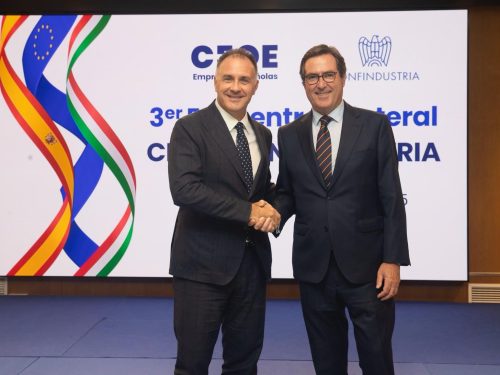News
Share on
"There is a South that wants to do, with an enterprise culture spread throughout the territories. A South that is asking for infrastructures, bureaucratic simplification, that does not want assistance at all, but measures that incentivise development to catch up with the Centre-North and other European areas'. Thus Vito Grassi, President of the Council of Regional Representations and for Territorial Cohesion Policies and Vice-President of Confindustria, analysed the data of the Check Up Mezzogiorno by Confindustria and SRM, where it emerges that 'the Mezzogiorno is holding up, has a manufacturing sector of excellence, but is heterogeneous across the territory, which must be strengthened and reinforced, using the resources available from the NRP and European Funds, a fundamental opportunity to catch up with the country'.
The summary index of the southern economy for the first time in the last 15 years exceeds the 2007 level: 'Undoubtedly, this is a positive sign,' said Grassi, 'and shows that there is a serious and vital entrepreneurial dynamic. This is also shown by the check-up data on the growth of companies, especially capitalised companies. The pandemic and this period of geopolitical crisis, with the price of raw materials and the energy shock, have generated greater awareness among entrepreneurs'.
Speaking of bridging the gaps on GDP and employment, Grassi pointed out: 'Growing the South is crucial for the whole country. Southern industry has long supply chains that connect it to the North. The data must be read in more depth: the birth of new companies, the dynamism of exports, which is the basis of this economic recovery, the presence of a manufacturing backbone in important sectors, from food to aeronautics, automotive, energy and pharmaceutical companies. The value chain of southern companies goes beyond the borders of the Mezzogiorno'.
Asked how to attract investment, the Vice-President said: 'The measures that incentivise investment in the South must be maintained. They should not be seen as aid, but as a driving force for growth. I am thinking of decontribution, tax credits, and financing for the Zes. I hope, as it seems, that these interventions will be reinstated in the Budget Law. They should be made structural, at least until the gaps have narrowed or almost narrowed. Then, possibly, a decalage can be considered'.
The president for Cohesion Policies recalled how the South needs a development model that 'pivots on public-private partnerships, on the support that the business world can give to the administration to implement the projects of the NRP and European Funds. We need to change the narrative: the data show that the South does not want assistance, but an economic development model, to have solid growth. Looking at infrastructure, starting with transport, there is a long way to go'. Finally, speaking of the NRP, Grassi said: 'It must represent a turning point. The EU has given Italy more resources than other European countries precisely because we have deeper gaps. By 2026 we must see what the effects of the reforms and works to be carried out will be. That is why it is important not to interrupt this momentum of the South now, but rather to strengthen it. The SEZs can play a decisive role, bringing together the economy of the sea, logistics, and industrial supply chains. They should be financed at least until 2026, when the NRP expires. This must be the opportunity to change the face of southern Italy'.
















